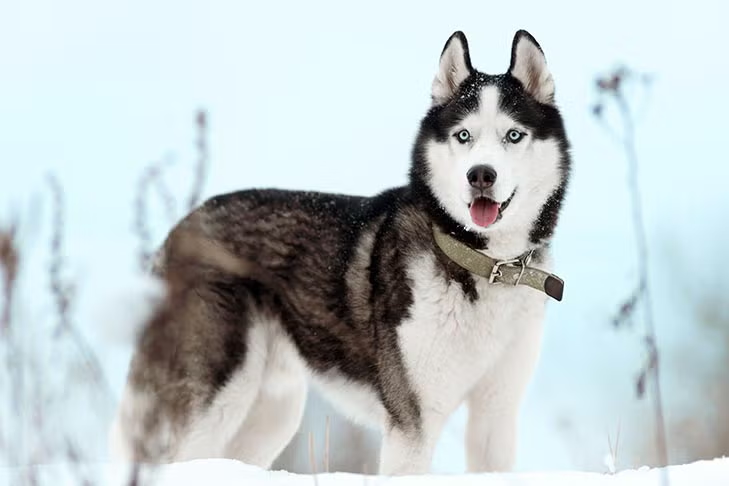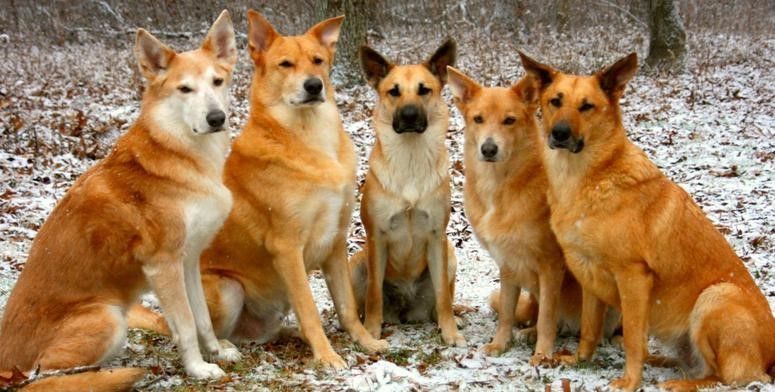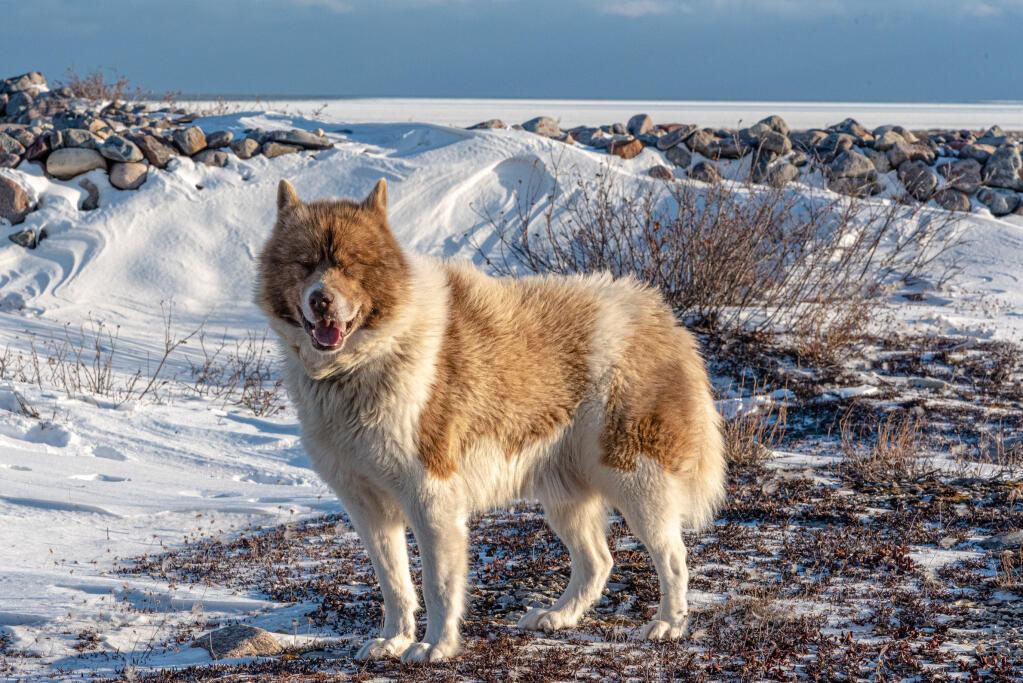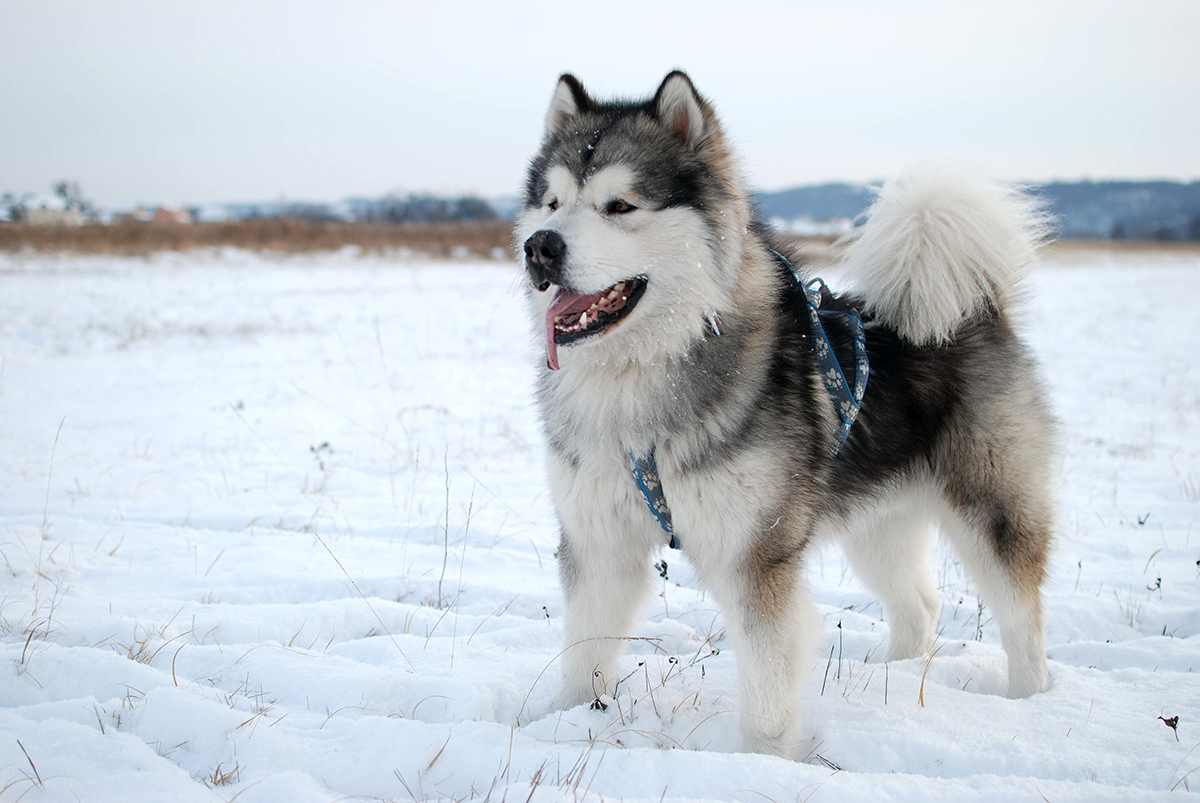Introduction: Wolf-Like Beauty with a Heart of Gold
Okay, can we just take a moment to appreciate how freaking GORGEOUS Siberian Huskies are? With their piercing blue (or sometimes multi-colored) eyes, wolf-like appearance, and that iconic thick, fluffy coat, it’s no wonder these dogs have shot up in popularity over the past decade. I mean, who hasn’t scrolled through Instagram and paused at a stunning Husky pic, thinking “Maybe I could handle one of those?”
But here’s the tea: Siberian Huskies are so much more than just a pretty face. These medium-sized bundles of energy come packed with personality, intelligence, and enough sass to rival a teenager. Behind those mesmerizing eyes is a dog breed that’s equal parts fascinating, challenging, and rewarding.
As someone who’s absolutely obsessed with these Arctic athletes, I’m here to give you the complete lowdown on Siberian Huskies—from their fascinating history pulling sleds across frozen tundras to what it’s really like living with one of these talkative escape artists in your modern home. Whether you’re considering adding a Husky to your family or just appreciate these magnificent creatures from afar, this post will help you understand what makes Siberian Huskies so special.
Spoiler alert: they’re not for everyone! But for the right person, a Husky can be the most incredible companion you’ll ever have. So grab your favorite beverage, get comfy, and let’s dive into the wonderful world of Siberian Huskies—the good, the challenging, and the absolutely majestic.
The Ancient History: From Siberia to Gold Rush Fame
The Siberian Husky’s story begins thousands of years ago in the harsh, frozen landscapes of eastern Siberia. These remarkable dogs were developed by the Chukchi people, indigenous nomads who needed reliable companions for hunting and transportation across the unforgiving Arctic wilderness. Archaeological evidence suggests that the relationship between the Chukchi and their dogs dates back over 3,000 years—making Huskies one of the oldest dog breeds in existence.
What’s particularly fascinating is how the Chukchi bred these dogs specifically for their environment and needs. They needed dogs that could pull sleds efficiently over long distances in freezing temperatures while requiring minimal food (a precious resource in the Arctic). The result was the Siberian Husky—a medium-sized sled dog with incredible endurance, a thick insulating coat, and remarkable efficiency in converting food to energy.
The Western world got its first real glimpse of these amazing dogs in the early 1900s when a Russian fur trader named William Goosak brought them to Nome, Alaska during the gold rush. At first, these smaller sled dogs were mocked as “Siberian rats” compared to the larger Alaskan dogs commonly used for sledding. However, attitudes quickly changed when Siberian Huskies began dominating sled races with their superior speed and endurance.
Then came 1925—the year that would cement the Siberian Husky in American history forever. When a deadly diphtheria epidemic threatened Nome, Alaska, teams of Siberian Huskies transported life-saving serum across 674 miles of treacherous Alaskan wilderness in just five and a half days. This remarkable feat, known as the “Great Race of Mercy,” captured the nation’s attention and inspired the annual Iditarod Trail Sled Dog Race.
The most famous dog from this serum run was Balto, a Siberian Husky who led his team through the final leg of the journey. Balto became a national hero, and a statue honoring him still stands in New York’s Central Park today. (Though true mushers know that Togo, another Husky who ran the most dangerous and longest leg of the journey, deserves just as much credit!)
Following their heroic feats in Alaska, Siberian Huskies gained popularity throughout the United States. The American Kennel Club officially recognized the breed in 1930, and they’ve been captivating dog lovers ever since with their wild beauty, athletic ability, and unique personality.
Physical Characteristics: Wolf-Like Beauty, Built for Endurance
Let’s talk about what makes Siberian Huskies so instantly recognizable—their stunning physical appearance. Medium-sized and well-proportioned, these dogs have an athletic build that perfectly balances strength and agility. Males typically stand 21-23.5 inches at the shoulder and weigh 45-60 pounds, while females are slightly smaller at 20-22 inches and 35-50 pounds.
The most striking feature for many people is, of course, those eyes. Siberian Huskies often have piercing blue eyes that seem to look right into your soul. But here’s a cool fact: they can also have brown eyes, or even one of each color (a condition called heterochromia)! This eye variation is completely normal in the breed and adds to their exotic appearance.
Their faces showcase a friendly and alert expression, with medium-sized triangular ears that stand erect and point slightly upward. The head is proportional to the body with a moderate stop (the transition from forehead to muzzle), giving them that distinctly wolf-like but approachable appearance.
The Siberian Husky’s coat is perhaps their most functional feature. They have a double coat consisting of a dense, soft undercoat and longer guard hairs that form the outer coat. This combination provides exceptional insulation against both extreme cold and heat. Their coat comes in a variety of colors and patterns, from pure white to black, with various shades of gray, red, and sable in between. Many Huskies have distinctive facial markings that give them a masked appearance.
One of the most recognizable traits of a Husky is their tail, which is heavily furred and carried in a gentle curve over their back when they’re alert or moving. When relaxed, the tail may hang in a “sickle” position. It’s not just beautiful—it’s functional too! When sleeping in the snow, Huskies will wrap their tails around their faces to protect their noses from the cold.
Another defining characteristic is their light, effortless gait. Bred for endurance rather than speed, Huskies move with a smooth, almost floating stride that can cover great distances with minimal energy expenditure. This efficiency of movement is what allowed them to pull sleds for hundreds of miles across the Siberian tundra.
Despite their wolf-like appearance, it’s worth noting that Siberian Huskies are 100% domestic dogs. Recent genetic studies have shown that while they’re among the most ancient dog breeds and do have some genetic similarities to wolves (as do all dogs), they are not more “wolf-like” genetically than many other breeds. Their appearance evolved naturally to suit their environment and working role.
Temperament: Independent, Playful, and Always On The Move
Beneath that gorgeous exterior lies a personality that’s equally fascinating—and sometimes challenging! Siberian Huskies have a temperament that reflects their heritage as working sled dogs, and understanding these traits is essential for anyone thinking about bringing one home.
First and foremost, Huskies are incredibly social and friendly. Unlike many working breeds that form attachments primarily to one person, Huskies typically love everyone they meet. They’re affectionate with family, great with children, and generally welcoming to strangers—which makes them terrible guard dogs but excellent family companions! This sociability extends to other dogs as well; most Huskies get along famously with other canines.
That said, their high prey drive means smaller animals might not fare so well around them. Cats, rabbits, squirrels, or other small pets might trigger their hunting instincts, though early socialization can help mitigate this tendency.
What surprises many people is the Siberian Husky’s independent nature. Unlike some breeds that live to please their owners, Huskies have a mind of their own. This isn’t a lack of intelligence—quite the opposite! Huskies are extremely smart, but they’re problem-solvers bred to think for themselves. In the Arctic, sled dogs often had to make independent decisions about safe travel routes across ice and snow. This translates to a dog that isn’t always interested in following commands just because you gave them.
That independence combined with intelligence means Huskies are master escape artists. They can dig under fences, jump over barriers, or figure out gate latches with astonishing ease. There’s a saying among Husky owners: “If your Husky is missing, they’re not lost—they’re on an adventure.” Their wanderlust is legendary, and a secure yard is absolutely essential.
Energy is another defining trait of the breed. Siberian Huskies were bred to run all day pulling sleds, and that energy doesn’t disappear just because they live in a suburban home! They need substantial daily exercise—think jogging, hiking, or dog sports like agility. A bored Husky is a destructive Husky, and they can wreak impressive havoc when their exercise needs aren’t met.
Perhaps the most endearing (or annoying, depending on your perspective) trait of Siberian Huskies is their vocalness. They rarely bark, but they howl, whine, and “talk” with an impressive range of sounds. Husky “tantrums” and “arguments” with their owners have become viral video material for good reason—these dogs have opinions and aren’t afraid to express them!
Finally, Huskies maintain a playful, almost puppy-like demeanor well into adulthood. They’re goofy, mischievous, and seem to have a genuine sense of humor. Many owners describe their Huskies as “three-year-olds in dog suits”—they’re eternally entertaining, occasionally exasperating, and always full of joy.
Training and Exercise: Channeling That Boundless Energy
Let’s be brutally honest here: training a Siberian Husky is not for the faint of heart. Their independent nature, high intelligence, and seemingly endless energy create a unique challenge that requires patience, consistency, and a healthy sense of humor. But with the right approach, you can definitely build a well-behaved (if occasionally stubborn) companion.
The key to Husky training is understanding that they’re not typically motivated by a desire to please like a Labrador or Golden Retriever. Instead, they operate on a “what’s in it for me?” mindset. This means traditional obedience methods might not be effective, and positive reinforcement with high-value rewards is absolutely essential. Find what motivates your particular Husky—whether it’s special treats, a favorite toy, or the opportunity to run—and use that as your training currency.
Start training early, ideally when they’re puppies. Focus on essential commands like recall (come), which can literally be a lifesaver with a breed known for running away. Socialization is equally important; expose your Husky to different people, animals, environments, and situations to help them develop into a well-adjusted adult dog.
Consistency is crucial. Huskies are masters at detecting inconsistencies in rules and will quickly capitalize on any loopholes they find. Everyone in the household needs to enforce the same rules, or your clever Husky will quickly learn who they can manipulate.
Training sessions should be kept short and engaging—about 10-15 minutes several times a day works better than hour-long sessions that might lead to boredom and disengagement. Mix up the exercises, incorporate games, and always end on a positive note.
Now, let’s talk about the most critical aspect of living with a Siberian Husky: EXERCISE. I cannot emphasize this enough. Without adequate physical and mental stimulation, Huskies can become destructive, anxious, and impossible to live with. These dogs were bred to run 50-100 miles a day in harsh conditions—a quick walk around the block just isn’t going to cut it.
Ideal exercise for a Husky includes:
- Jogging or running (once they’re fully grown)
- Hiking on trails
- Swimming (many Huskies actually enjoy water!)
- Dog sports like agility, rally, or nose work
- Structured play with other dogs
- Activities that harness their pulling instinct, like skijoring, bikejoring, or canicross (where the dog pulls a person on skis, a bike, or while running)
A minimum of 1-2 hours of vigorous exercise daily is recommended for adult Huskies, with puppies requiring multiple shorter sessions appropriate for their developing bodies. Mental stimulation is equally important—puzzle toys, training games, and varied environments help keep their clever minds engaged.
One crucial safety note: Huskies should NEVER be exercised off-leash in unsecured areas. Their prey drive and wanderlust mean they can bolt after a squirrel in a split second, completely ignoring your calls to return. Many Huskies have been lost this way. Always use a secure harness (not just a collar, which they can slip) and reliable leash for walks, and only allow off-leash freedom in securely fenced areas.
Grooming and Care: Managing the Legendary Shedding
Let’s talk about Husky fur—specifically, the mind-boggling amount of it that will eventually cover every surface of your home. Siberian Huskies have a beautiful double coat that serves them well in extreme conditions, but it comes with a maintenance requirement that potential owners need to understand.
For most of the year, Huskies require relatively modest grooming. A thorough brushing once or twice a week will remove loose hair and prevent matting. Their coat has natural oils that keep it clean and healthy, so bathing should be infrequent—maybe 2-4 times a year unless they get particularly dirty. Overbathing can strip these oils and lead to skin problems.
But then comes “the blow”—the seasonal shedding that occurs typically twice a year, usually in spring and fall. During these periods, Huskies shed their entire undercoat in a fur apocalypse that has to be seen to be believed. For several weeks, fur will come out in tufts and clumps that seem impossible for one dog to produce. Daily brushing (sometimes even multiple times a day) becomes necessary, and many owners invest in specialized deshedding tools to manage the fur tsunami.
On the plus side, despite all that shedding, Siberian Huskies are generally very clean dogs with minimal “dog odor.” They’re often compared to cats in their self-grooming habits, and many Husky owners report that their dogs rarely have that typical “doggy smell.”
Beyond coat care, regular nail trimming is important, especially if your Husky doesn’t wear down their nails naturally through exercise on hard surfaces. Their ears should be checked weekly for signs of infection, and teeth should be brushed regularly to prevent dental issues.
One special consideration for Huskies is temperature management. Despite popular belief, Huskies can adapt to warmer climates, but they do require some accommodations. Their double coat actually insulates against both cold AND heat, so never shave a Husky in summer (this can lead to sunburn and interfere with their natural temperature regulation). Instead, provide plenty of shade, fresh water, and consider limiting outdoor activities to cooler parts of the day. Air conditioning during extreme heat is strongly recommended.
In cold weather, Huskies are typically in their element, but those living in apartments or homes without yards still need regular exercise regardless of the temperature. The good news is that snow and cold weather often bring out the puppy-like joy in Huskies—watching them play in fresh snow is one of the true delights of owning this breed!
Health: Robust Dogs with Some Breed-Specific Concerns
One of the many advantages of Siberian Huskies is their generally robust health. As a breed that evolved naturally in harsh conditions (rather than being heavily shaped by human selective breeding for appearance), they tend to have fewer health problems than many purebred dogs. Their average lifespan is 12-15 years, which is excellent for a medium-sized breed.
That said, no breed is without health considerations, and responsible Husky owners should be aware of potential issues that can affect the breed:
- Eye Conditions: Huskies can be prone to various eye problems, including cataracts, corneal dystrophy, and progressive retinal atrophy (PRA). Most concerning is hereditary or juvenile cataracts, which can appear in young dogs and potentially lead to blindness. Regular eye examinations by a veterinary ophthalmologist are recommended.
- Hip Dysplasia: While less common in Huskies than in many large breeds, hip dysplasia can still occur. This genetic condition affects the hip joint’s formation and can lead to pain and mobility issues.
- Zinc Deficiency: Some Huskies have difficulty absorbing zinc from their diet, leading to a condition called zinc-responsive dermatosis. This can cause skin lesions, particularly around the face and pressure points.
- Laryngeal Paralysis: This condition affects the muscles that open and close the larynx, potentially causing breathing difficulties and exercise intolerance. It tends to affect older Huskies.
- Uveodermatologic Syndrome: This rare autoimmune disorder affects both the eyes and skin, potentially leading to depigmentation and vision problems.
Genetic testing is available for several of these conditions, and reputable breeders will test their breeding stock to reduce the likelihood of passing on hereditary issues. If you’re purchasing a Husky puppy, ask about health testing and request documentation.
On the nutrition front, Huskies are surprisingly efficient eaters. Bred to maintain energy on minimal food during long sledding journeys, they typically require less food than other dogs of similar size. Overfeeding can quickly lead to obesity, which exacerbates joint problems and reduces their natural activity level. Follow your veterinarian’s recommendations for feeding, and adjust portions based on your dog’s activity level and body condition.
One quirk of the breed is their tendency toward food sensitivity or pickiness. Some Huskies can have sensitive stomachs or may go through periods of disinterest in their food. A high-quality diet appropriate for active dogs is recommended, and consistency in feeding is important.
Regular veterinary check-ups, proper nutrition, adequate exercise, and preventative care like dental cleaning and parasite control will help your Husky live a long, healthy life. Their natural hardiness means that with proper care, many Huskies remain active and energetic well into their senior years.
Living With a Husky: The Real Deal
So what’s it actually like to share your home with one of these magnificent but challenging dogs? Let’s get real about daily life with a Siberian Husky.
First, expect to adjust your lifestyle. Huskies need time, attention, and LOTS of exercise. If you’re a couch potato who dreams of a dog that will snuggle quietly by your side while you binge-watch Netflix, a Husky is not your match. These dogs thrive with active owners who enjoy outdoor activities and are willing to incorporate their dog into their exercise routine.
Your home security will need an upgrade. The average backyard fence that might contain other breeds is often no match for a determined Husky. They can jump surprisingly high, dig with impressive speed, and even scale chain-link fences like ladders. Secure fencing at least 6 feet high with dig guards extending underground is a must. Many Husky owners add additional security measures like lock clips on gates and even overhead barriers for particularly athletic escape artists.
Inside the home, expect a dog that’s generally clean but can be mischievous. Huskies are infamous for their creativity when bored—from reorganizing your throw pillows to unraveling toilet paper or discovering how to open the refrigerator. Puppy-proofing needs to be taken to another level with this breed, and many owners discover their Husky’s intelligence the hard way when they come home to innovative destruction.
The noise level with a Husky can be surprising if you’re used to quieter breeds. While they don’t typically bark much, their vocalizations are varied and frequent. Howling, “talking,” whining, and dramatic sighs are all part of the Husky language. This can be charming or frustrating, depending on your tolerance for canine conversations and your living situation. Apartment dwellers should consider whether Husky howls will create tension with neighbors.
Be prepared for fur—everywhere, on everything, always. Even outside of the major seasonal shedding periods, Huskies consistently leave hair on your clothes, furniture, food, and possibly even your toothbrush (don’t ask me how). A good vacuum cleaner is an essential investment, and many Husky owners adopt a more relaxed attitude about housekeeping out of sheer necessity.
The social nature of Huskies means they typically don’t do well with long periods alone. Separation anxiety can develop if they’re regularly left for extended hours, and a bored, anxious Husky can be destructive beyond imagination. Many Husky owners arrange for dog walkers, daycare, or flexible work schedules to ensure their pup isn’t alone for too long.
That said, the rewards of sharing your life with a Siberian Husky are immense for the right person. Their joyful approach to life is contagious, and they can motivate even reluctant exercisers to get moving. Their intelligence makes them fascinating companions who continually surprise you with their problem-solving abilities. And their affectionate nature—those cuddles when they finally settle down after a day of adventure—is heart-meltingly sweet.
Huskies also tend to be excellent family dogs, particularly with children. Their gentle nature and seemingly infinite patience make them good playmates, though as with any dog, interactions with young children should always be supervised.
Is a Siberian Husky Right for You? The Honest Assessment
After learning about all aspects of the Siberian Husky, you might be wondering if this is the right breed for your lifestyle. Here’s a straightforward assessment to help you decide:
You might be a great match for a Siberian Husky if:
- You’re active and enjoy outdoor activities like hiking, running, or cycling
- You have a securely fenced yard or access to safe exercise areas
- You have previous dog experience and understand positive reinforcement training
- You’re home regularly and can provide consistent companionship
- You’re patient and have a good sense of humor about canine antics
- You don’t mind dog hair on basically everything you own
- You appreciate a dog with personality and independence
- You live in a house rather than an apartment (though apartments can work with exceptional commitment to exercise)
A Siberian Husky probably isn’t right for you if:
- You work long hours and can’t arrange for your dog’s care during the day
- You’re looking for an easily trainable, always-obedient dog
- You want a dog that can be off-leash in unfenced areas
- You have small pets like cats, rabbits, or birds
- You’re extremely house-proud or bothered by dog hair
- You live in an extremely hot climate without air conditioning
- You want a guard dog that will be suspicious of strangers
- You’re a first-time dog owner unprepared for a challenging breed
If you’ve determined that a Husky might be right for you, please consider adoption first. Due to their challenging nature and the popularity driven by their beautiful appearance, many Huskies end up in rescue organizations when owners realize they can’t meet their needs. Breed-specific rescues can help match you with a Husky whose personality suits your lifestyle, and many offer support and resources for new owners.
If you decide to purchase a puppy, research is essential. Look for reputable breeders who prioritize health and temperament over appearance, conduct appropriate genetic testing, and raise puppies in a home environment with proper socialization. Avoid pet stores and online ads offering puppies with suspiciously low prices, as these often come from puppy mills with terrible conditions.
Conclusion: The Wolf-Like Wonder That Steals Hearts
The Siberian Husky is truly a special breed—a living connection to ancient human history and a testament to the incredible bond between humans and dogs. From the frozen expanses of Siberia to family homes around the world, these beautiful animals continue to captivate us with their wild appearance and domestic hearts.
While they’re definitely not the easiest breed to own, Huskies offer rewards that match their challenges. Their boundless joy, playful spirits, and affectionate nature make them beloved companions for those willing to meet their needs. There’s something magical about watching a Husky in their element—whether it’s racing through snow, figuring out a puzzle toy, or simply “talking” to you about their day.
If you decide to welcome a Siberian Husky into your life, prepare for adventure. These dogs will push you to be more active, test your creativity with their problem-solving skills, and possibly test your patience with their independent streak. But they’ll also bring laughter, loyalty, and a unique personality that will transform your world.
Just remember to invest in a really, REALLY good vacuum cleaner.




